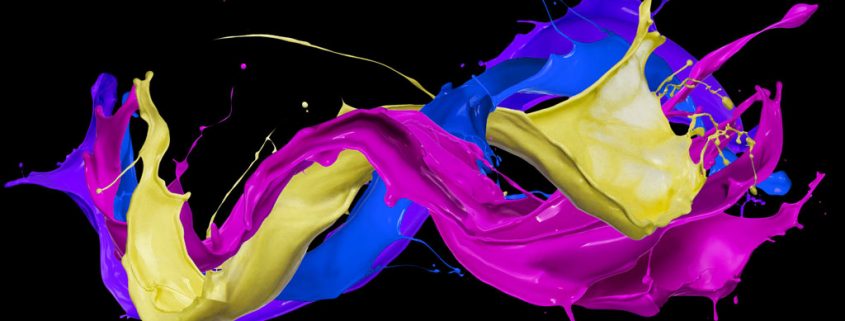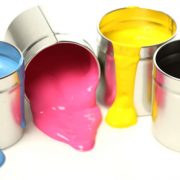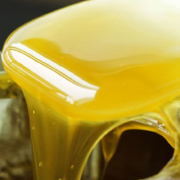What is grading and how is it measured in paints and related materials?
This post provides an overview of the concept of grading and how important it is in the paint manufacturing process.
In the paint industry, the particle size of pigments and fillers that make up the formulas is of great importance, since it determines the characteristics of the final product such as the coverage, gloss or texture of a layer of paint.
In the paint sector, grading determines the particle size of a powdery solid, and the scale used to measure this size is the micron (µm), one thousandth of a millimetre (1/1000 mm).
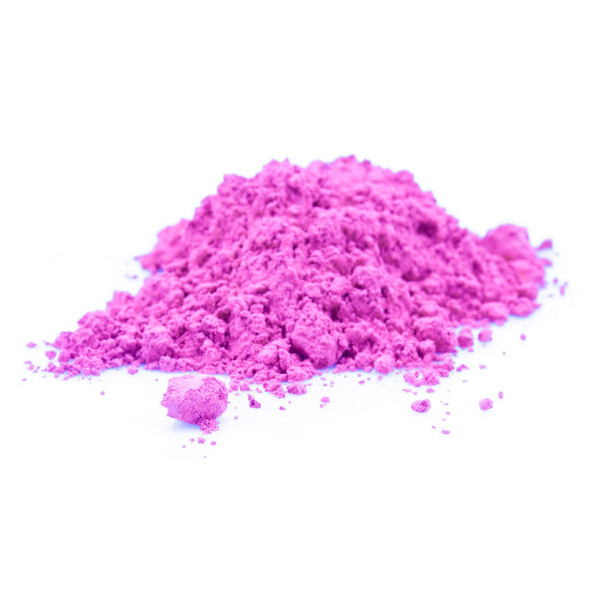 The particle size of powder raw materials can affect certain properties of paints. These properties include:
The particle size of powder raw materials can affect certain properties of paints. These properties include:
- Coverage and colouring capacity of white and colour paints.
- Surface gloss and uniformity.
- Painted surface uniformity after the application and drying process.
- Viscosity (as a result of the absorption index).
- Tendency toward sedimentation.
- Physico-chemical reactivity of the pigment with the binder.
Particle size can also be used to achieve different finishing effects. For example, elastic paints with regular grading achieve greater waterproofing. Or a fine grading of fillers in this type of paint provides a smooth satin finish which helps to reduce soiling.
In the manufacture of paints, the concept of grading is used to define the size of solid particles that make up the formulas of liquid or powder paints. In the case of liquid paints, these particles are dispersed in a liquid medium, which –as it will be explained below– results in their even distribution in the liquid medium during dispersion, carried out during paint manufacturing.
How is grading measured in paints and related materials?
There are different techniques for measuring particle size and the result may differ depending on the technique used. Why is that? If the solid particles found on paint are viewed under a microscope, it shows that they are irregular in shape, almost never spherical or rounded. The maximum length of the particle can be considered its size, which is called diameter, even if it is not exactly a diameter as it is not spherical. Conversely, one can also determine the minimum diameter (or intermediate), thus producing a particle of a different size.
When applying one measuring technique or another, it is important to consider what property of the particle is measured by that technique: minimum or maximum length, volume, area, etc.)
Particle measuring techniques
The most widely used techniques for measuring the size of solid particles in paints include:
1.- Microscopy
Microscopy enables both seeing the particles directly, and studying their shape which, in turn, will also facilitate assessing whether correct dispersion was achieved, or agglomerates still exist.
Microscopy can be either electronic or manual. The former requires a slow and careful elaboration of the sample. In the case of manual microscopy, in addition to the fact that it provides for the examination of a few particles per day, it causes great fatigue for the specialist operator.
In the paint sector, microscopy can be used in combination with the diffraction technique (explained below) as it provides an interesting view of the shape of the particles in the material, once they are dispersed.
2.- Laser Diffraction
Laser diffraction, which is also called Low Angle Laser Light Scattering (LALLS), is the method used to provide a standard for many industries, by which characterisation and quality control of particle size shall be in the range of 0.02 to 3,500 microns.
Laser grading is based on the diffraction of light applied to solid particles. The principle of laser beam diffraction consists of processing a sample, either dry or suspended in a non-reactive liquid, through a monochromatic laser beam. According to Frahunhofer’s theory, a diffraction figure is generated in the detector and the particle size analysis is obtained. Its accuracy level is on the region of one hundredth of a micron.
Laser diffraction is an absolute method based on fundamental scientific principles. It has a high dynamic range, as it could be observed, and it is very flexible. It is a non-invasive and non-destructive method, so the sample can be recovered for further assessment. This method offers outstanding speed, providing results in less than 1 minute.
This procedure is very difficult to use with high-viscosity products.
3.- Grind gauge
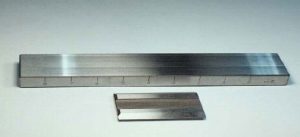
The grind gauge is an instrument that enables measuring and determining the particle size and fineness of grind in paints, coatings, pigments, etc.
Measuring is carried out by pouring a few drops of the product to be tested in the deepest part of the grooves. Then, the paint is pushed towards the ends of the grooves, with the minimum graduation, with a scraper while the grind gauge is slightly tilted.
This method is used to determine the thickness of the wet film, where pigment particle size is slightly larger than the thickness of the film.
Measuring results with a grind gauge differ from the methods above in that, rather than indicating ‘particle fineness’ in microns, it indicates the ‘grind size’ in the conventional NS or PCU measurement system.
Particle size analysis of the paint in its liquid state is fundamental to measure the effectiveness of the dispersion and grinding processes. The grading of the various components will depend at all times on the characteristics of the powdered raw materials in the formula.
These processes are further described below.
Dispersion and particle size
In the dispersion process, which is the first step in paint manufacturing after mixing the components, solid agglomerates are reduced, and the particles are distributed within the liquid uniformly and homogeneously. The rotation of mechanical elements (sawtooth impellers) reduces the size of the agglomerates on pigments and fillers present in the formula.
Dispersion is one of the most important steps in the manufacture of paints, because it combines and stabilises the materials that make up the product: pigments, fillers, solvents, additives, etc.
The dispersion process carried out for paints involves both mixing equipment and grinding machines. The dispersion phases are discussed below.
Phases of the dispersion process
The dispersion process involves 3 phases or stages:
Wetting
Wetting is the process by which the air and the moisture surrounding the pigment are replaced by a solution combining resin and solvents.
To better carry out this operation, wetting additives are used, which then adhere to the surface of the pigment and improve liquid-solid compatibility.
Actual dispersion or deagglomeration
In this phase, the agglomerates are destroyed, and the particles are separated. It is carried out in parallel with the wetting.
The energy required for deagglomeration can be produced by force, shearing or friction:
- Deagglomeration by force is performed in ball mills and requires low viscosity materials in order not to slow down the impact.
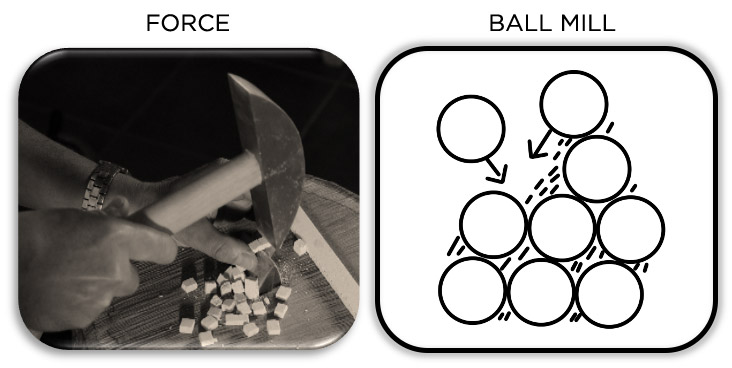
- Deagglomeration by shearing is performed in conjunction with a high-speed disc or between the rolls of a three-roll mill. In high viscosity products, the shear action is transmitted to adjacent layers.

- Deagglomeration by friction consists of placing the pigment between two stacked balls that roll at different speeds in a dispersion chamber. It requires medium-viscosity products.
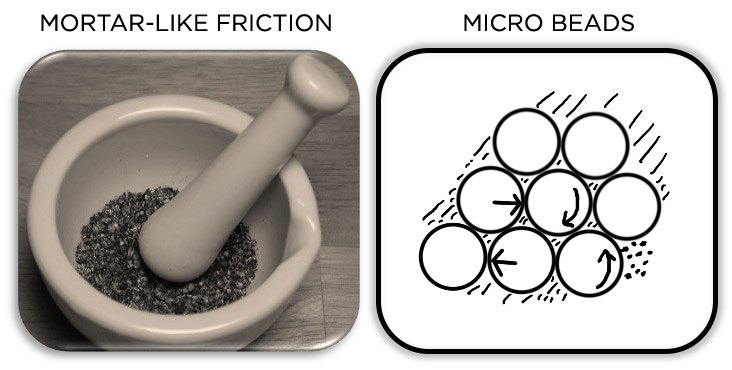
Stabilisation
Stabilisation is the stable and durable preservation of the separation between the deagglomerated particles within the fluid. To achieve this, dispersing additives are added to prevent flocculation of the dispersed particles. The effect of these additives develops during the grinding process and lasts until the paint is used, so as to avoid deposit problems.
Oliver + Batlle Equipment
Oliver + Batlle’s dispersing and mixing equipment includes the outstanding Dispermix range with the VF, VF-E, and VF-L models for medium- and low-viscosity products, as well as Polimix DPS-OR, and the models Dispermix Dual VFD, and Polimix DPS for high-viscosity products.
How does the grinding process affect final particle size?
In the paint manufacturing process, the particles of the agglomerates generated by the union of the solid and liquid elements may not get separated in spite of the shearing or force process used during the dispersion. This occurs mainly in some paints and colourants due to the highly strong electro-physical bonds produced between their particles.
When this happens, it is necessary to apply extra energy to the agglomerates, which is known as the grinding process.
In grinding equipment or mills, micro beads are chaotically accelerated inside the mill, producing a greater force and shear effect on the particles, thus achieving a greater reduction of agglomerate size. The aim is for pigments and fillers to reach their initial sizes and to achieve a perfect and homogeneous distribution among the base liquid.
At Oliver + Batlle, we hope you found this information interesting. We invite you to request more information about our mixing and grinding equipment through our contact section.
Share any doubt or experience in the comments section and follow us on Linkedin to keep up with our news.

